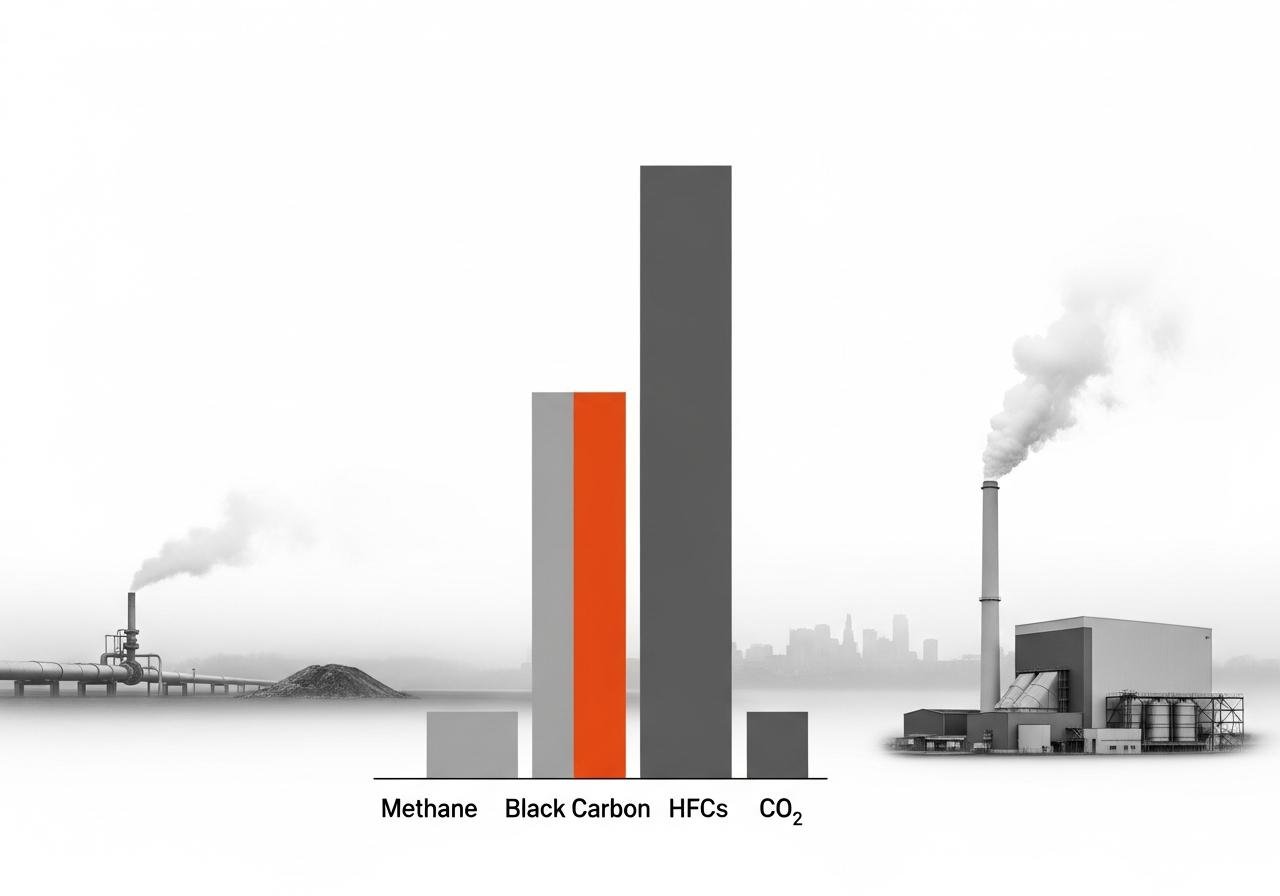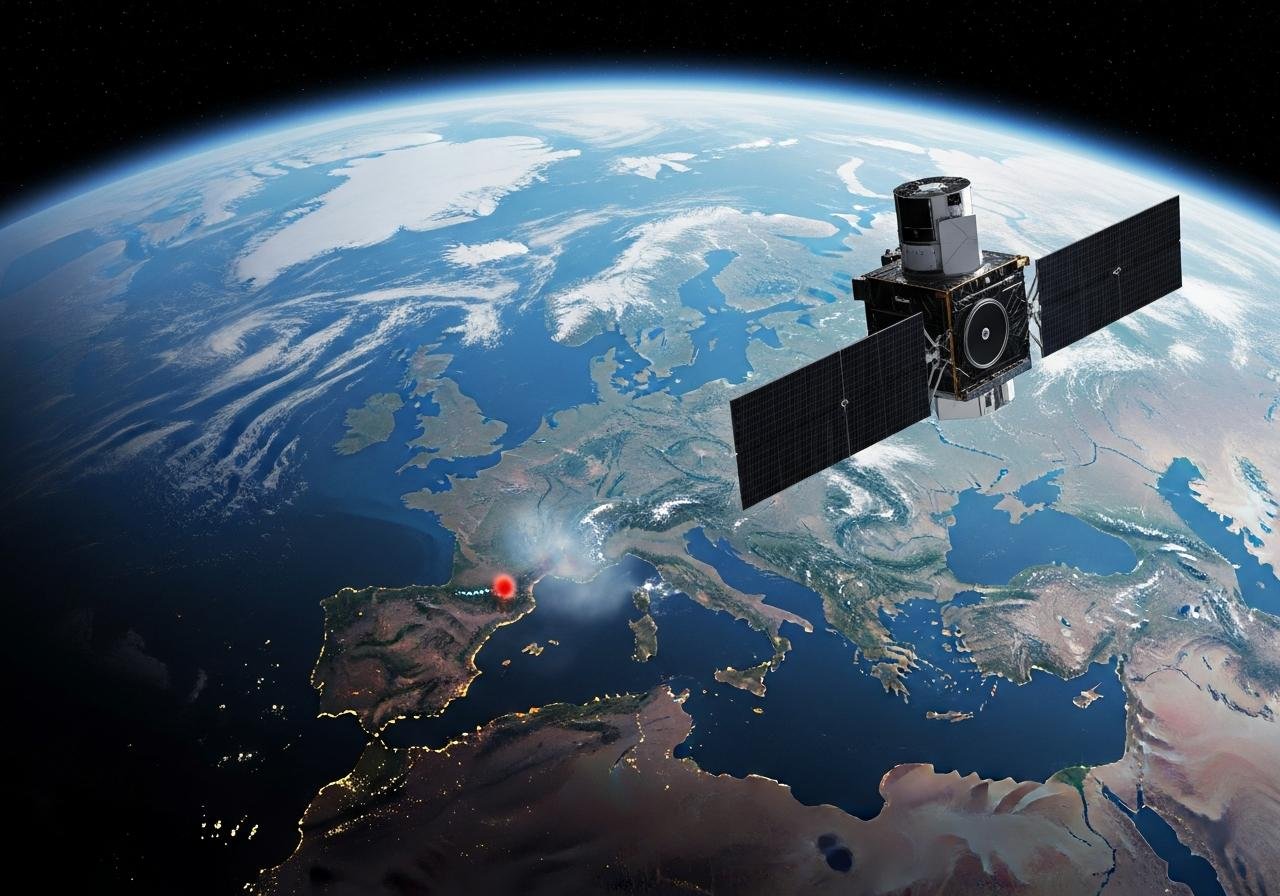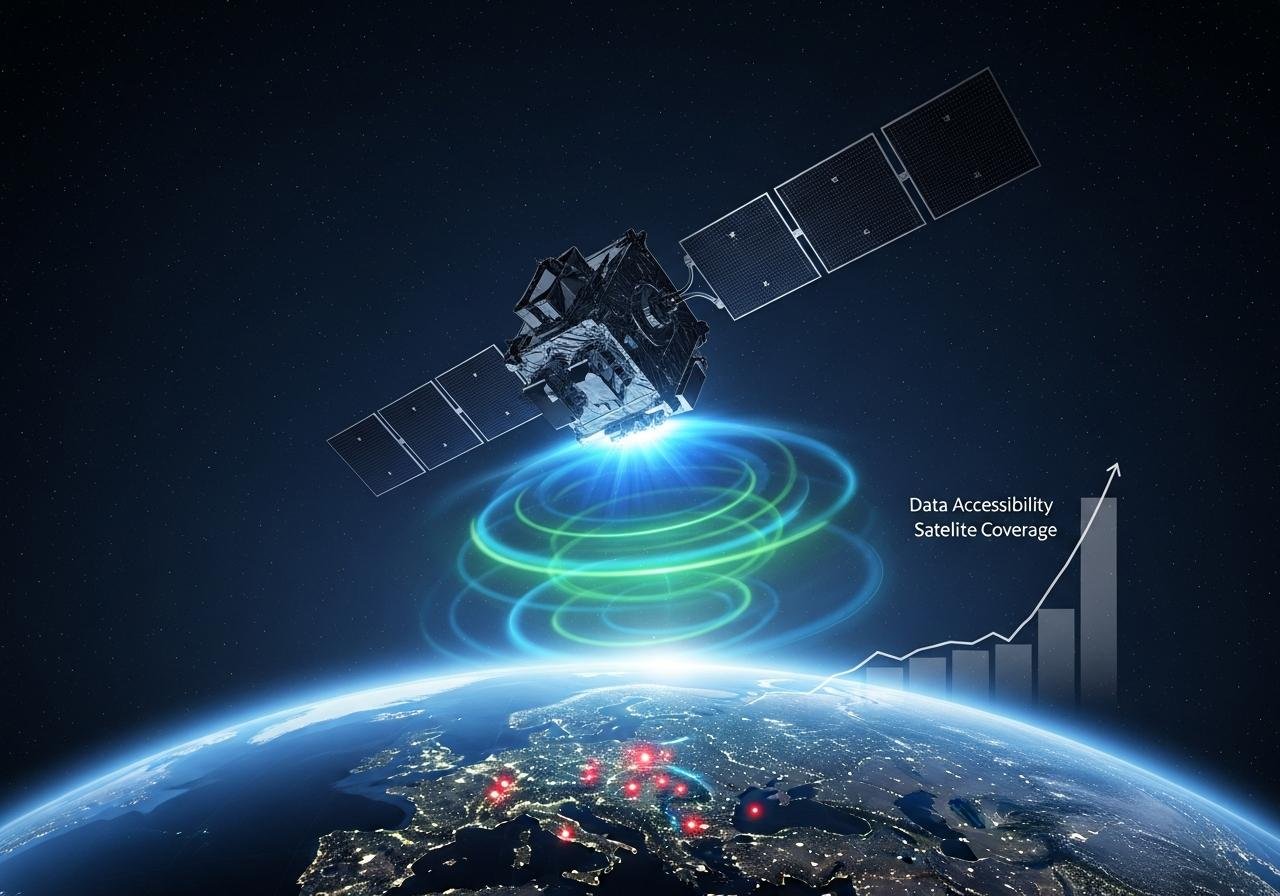
Satellite Hunt for Superpollutants Wins $100 Million New Funding
Not every threat to the planet is visible with some of the most powerful climate-warming gases being colorless, odorless, and often overlooked—yet they trap heat thousands of times more effectively than carbon dioxide. These are the “superpollutants,” and a growing network of satellites is gearing up to find them from space.
Recently, a coalition of climate organizations and philanthropists announced a $100 million boost to this effort, marking one of the largest investments ever made in high-tech pollution tracking with the goal being to sharpen our vision of what’s actually floating above us—and to give governments and industries the data they need to act fast. Satellites, it turns out, are becoming the new detectives in humanity’s race to stabilize the atmosphere.

Understanding Superpollutants: What Are They?
Superpollutants are short-lived but extraordinarily powerful climate agents – with the best known being methane, black carbon (soot), and hydrofluorocarbons (HFCs)—gases and particles that don’t linger in the air for centuries like CO2 but punch well above their weight in the short term.
Methane specifically, for example, warms the planet over 80 times more than carbon dioxide over a 20-year period per molecule and therefore understanding these pollutants is crucial as they can be addressed through technologies such as those promoted in the waste-to-energy technologies sector, which offers solutions to optimize waste management.
These pollutants come from familiar sources: leaking oil and gas infrastructure are the most responsible for the release of methane into the atmosphere but also responsible are agricultural waste, landfills, inefficient diesel engines, and even aging refrigerators and air conditioners.
Though they often dissipate faster than CO2, their impact is concentrated and intense—responsible for roughly half of today’s global warming when combined. This emphasizes the importance of the role of local governments in waste management to mitigate such emissions effectively. So while we are aware that the CO2 level of the atmosphere continues to rise from pre-industrial levels of 280 parts per million (ppm) to 420 ppm today. Indeed more worrisome is the rate of the increase from an annual rate of 0.8 ppm in the 1960’s to 2.6 ppm in the past decade.
Meanwhile methane concentrations have increased even more dramatically from 350-700 ppm to over 1900 ppm – a greater than 250% increase. This increase comes mainly from agriculture (specifically livestock) as well as the oil/gas industry with methane released into the atmosphere from oil and coal extraction. Given the fact that methane has a shorter half-life than CO2 and has a significantly greater effect per molecule curbing its rise is one of the fastest ways to slow temperature rise this decade. It’s not just about climate: reducing superpollutants also improves air quality and public health, particularly in densely populated urban areas. In short, these substances are climate’s low-hanging fruit—if we can find them.

The Role of Satellite Technology in Environmental Monitoring
From the outside, satellites may look like silent observers orbiting our blue-green planet, but each one carries an arsenal of sensors capable of detecting faint chemical fingerprints in the atmosphere. Using advanced imaging spectroscopy, satellites can pinpoint methane leaks from pipelines, trace industrial plumes, and map pollution hotspots with remarkable precision.
Traditional ground measurements—while valuable—are limited by geography and politics. Satellites cut through those boundaries as they collect consistent, global data, revealing emissions patterns that might otherwise go unnoticed or unreported. Initiatives like NASA’s EMIT mission and the European Space Agency’s Sentinel satellites have already demonstrated how space-based monitoring can revolutionize environmental transparency.
It’s the difference between trying to understand a forest by studying individual trees versus seeing the whole canopy from above.

The $100 Million Funding: Objectives and Allocation
The new $100 million funding package—which combines support from climate philanthropies, private foundations, and technology partners—aims to expand satellite coverage and data accessibility. According to project leaders, the funds will support the next generation of satellites equipped with hyperspectral imaging tools capable of identifying even the smallest emission leaks.
Part of the budget will go toward improving data-sharing platforms so that researchers, journalists, and policymakers can view and act on real-time findings. Another portion will fund partnerships with local governments to support rapid-response programs—essentially, fixing leaks and upgrading infrastructure once pollution sources are identified. This is part of broader efforts to support sustainable waste reduction initiatives through advanced technology and community engagement.
Expected milestones include launching new observation satellites within the next three years, publishing open-access emission maps, and creating standardized protocols for verifying satellite-detected leaks on the ground.

Global Collaboration and Partnerships
Tackling superpollutants is not a one-nation challenge; it’s a planetary one. The “satellite hunt” project brings together a mix of players—from NASA and the European Space Agency to nonprofits such as MethaneSAT and Climate TRACE. Collaboration is the heartbeat of this initiative, bridging the gap between science, policy, and technology.
Governments and corporations alike are being invited to participate, providing data and aligning emission reduction efforts. Academic and research institutions will play a key role in analyzing satellite findings, ensuring that the science stays rigorous and public-facing. It’s a web of partnerships that reflects how environmental progress increasingly depends on shared vision and trust across borders.

Moving Towards a Greener Future
The $100 million satellite initiative marks more than a funding milestone—it represents a shift in how humanity sees its relationship with the atmosphere. By mapping the invisible, we gain power over it. Each new satellite, each leak detected, each ton of methane prevented from reaching the sky, brings us closer to a cooler, clearer, and more sustainable world.
The sky, once a symbol of distance, is now our best tool for protecting what’s below it. And that’s something worth looking up to.
FAQs
1. What is the ‘Satellite Hunt for Superpollutant’ project?
The Satellite Hunt for Superpollutant project is a global initiative that uses advanced satellites to detect and monitor methane and other high-impact greenhouse gases from space. Its goal is to identify the biggest polluters and help reduce emissions more effectively.
2. What are ‘superpollutants’?
Superpollutants are short-lived but extremely potent greenhouse gases, such as methane, black carbon, and hydrofluorocarbons (HFCs). They trap much more heat in the atmosphere than carbon dioxide, making them major contributors to climate change despite their shorter lifespan.
3. How much funding has the project received?
The project recently received $100 million in new funding to expand its monitoring capabilities, improve satellite technology, and enhance global transparency in emissions tracking.
4. Who is funding this initiative?
The funding comes from a mix of philanthropic organizations, climate-focused investors, and international research agencies committed to advancing climate action through technology and data-driven transparency.
5. How will the new funding be used?
The funding will be used to launch additional satellites, improve data analytics, support open-access emission databases, and collaborate with governments and companies to encourage emission reductions.
6. Why is tracking methane and other superpollutants important?
Methane and similar pollutants are responsible for nearly half of current global warming. Tracking them helps identify leak sources, enforce accountability, and accelerate climate progress more effectively than focusing solely on CO₂ reductions.
This article is for informational purposes only.
Reference: https://www.bloomberg.com/news/articles/2025-11-06/satellite-hunt-for-superpollutant-wins-100-million-new-funding
The post Satellite Hunt for Superpollutant Wins $100 Million New Funding appeared first on Green.org.














